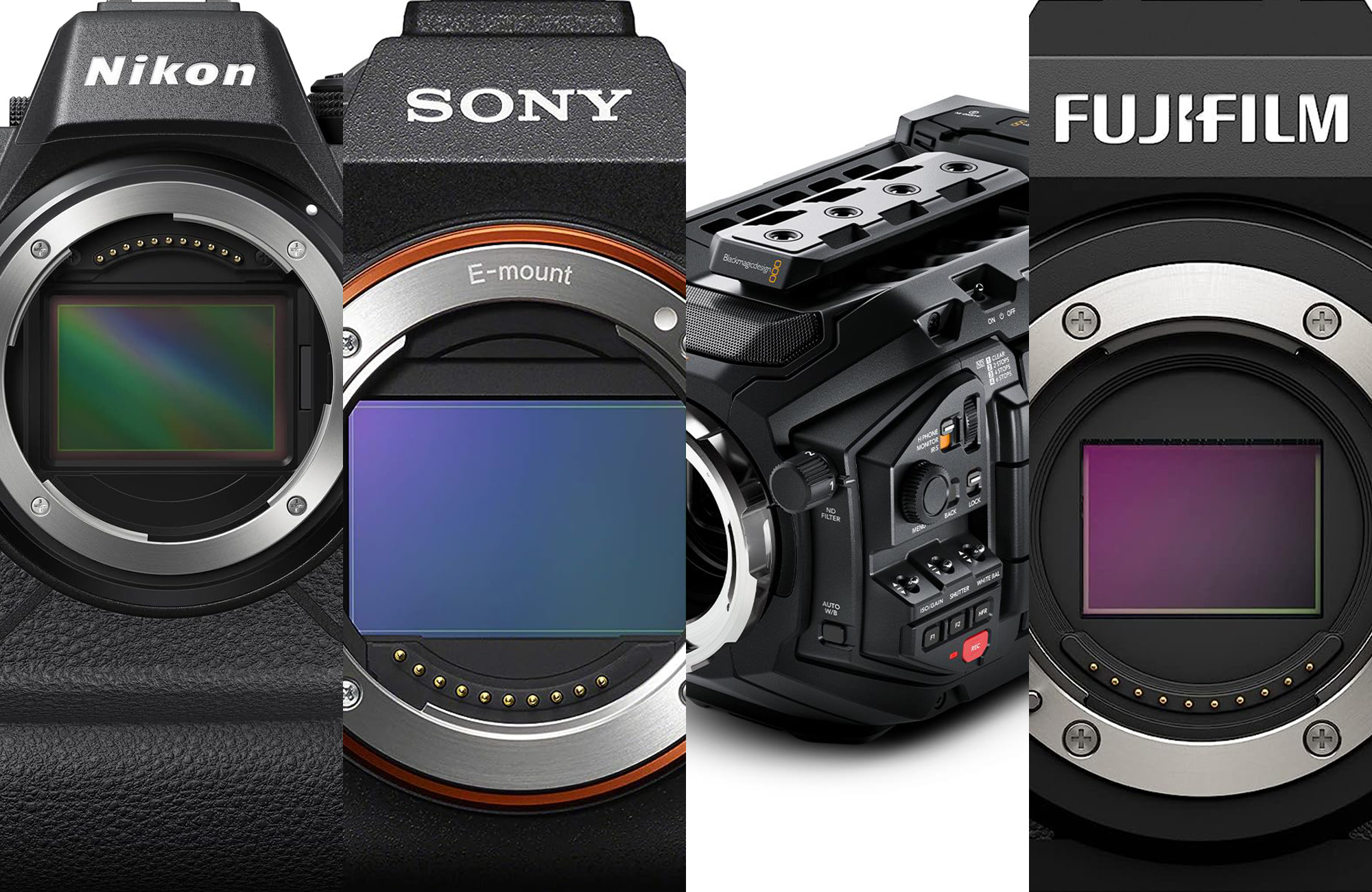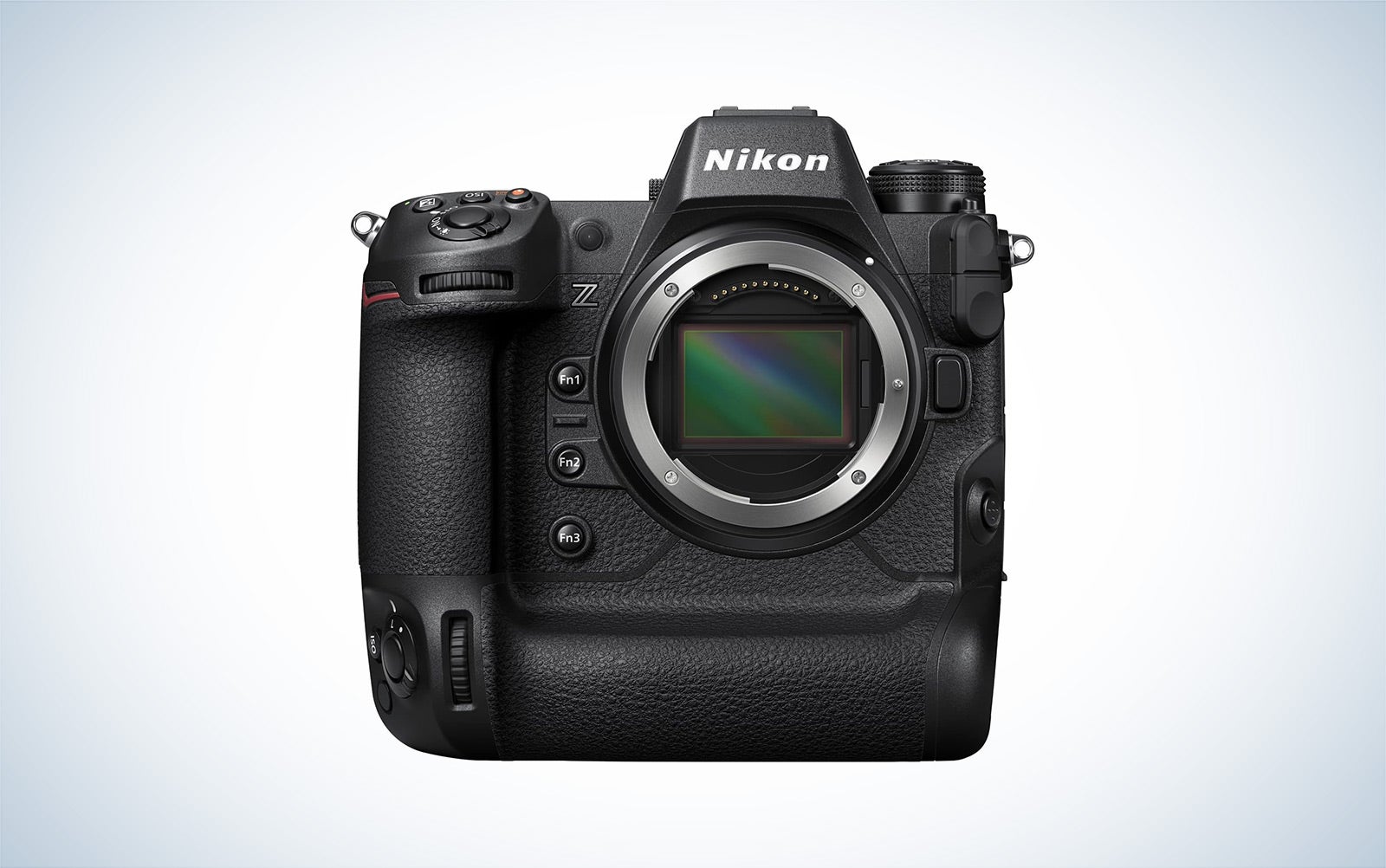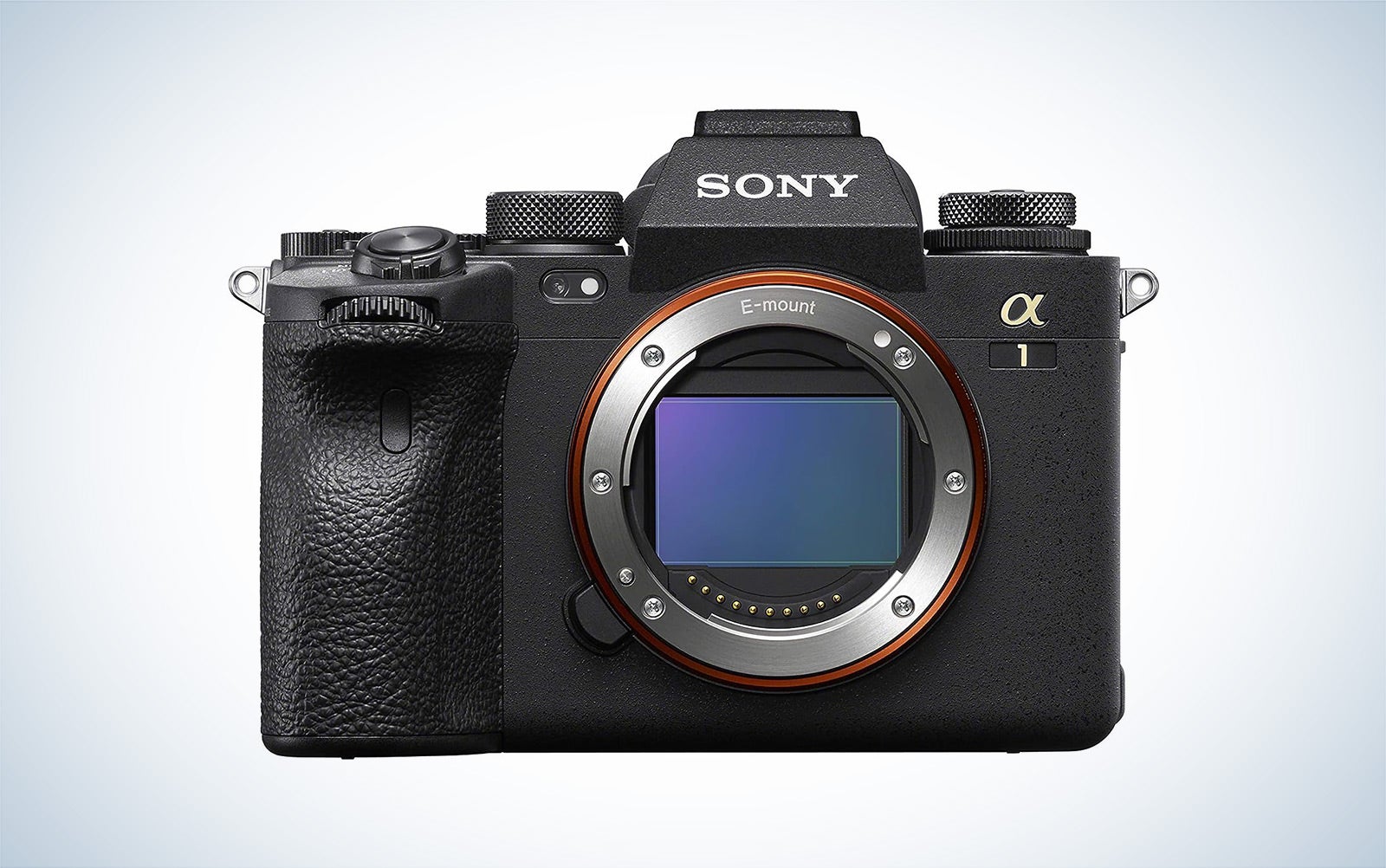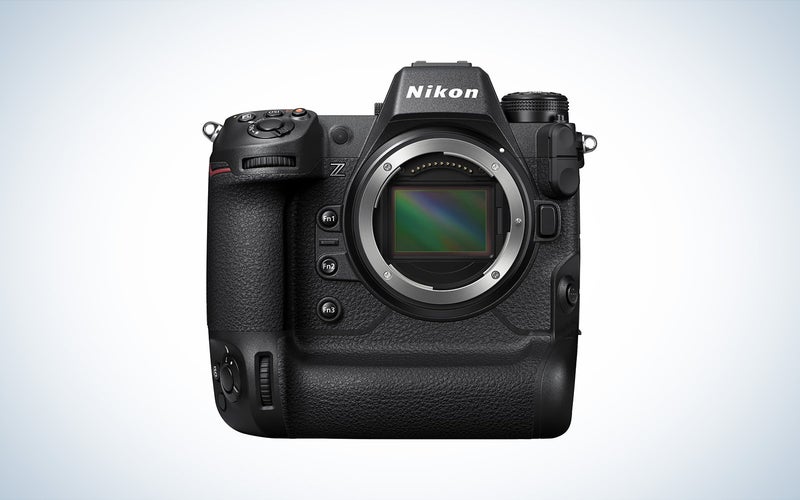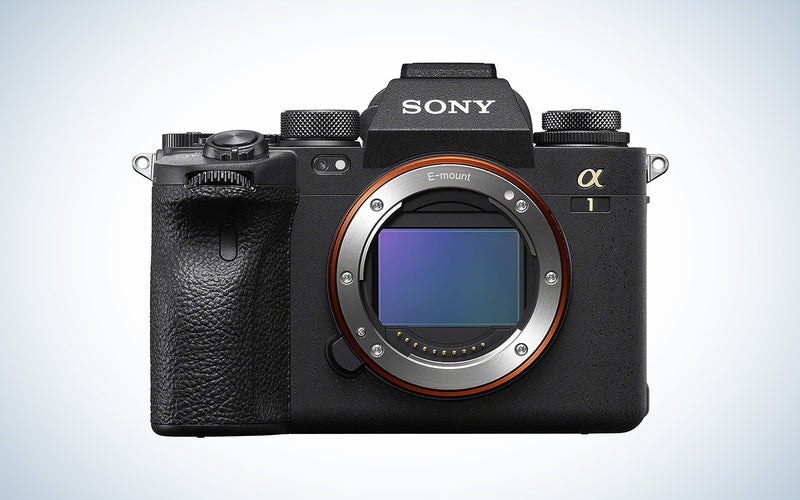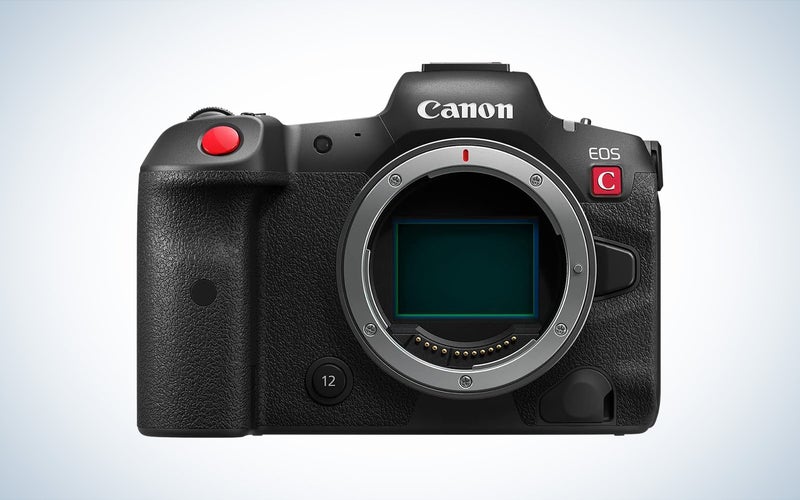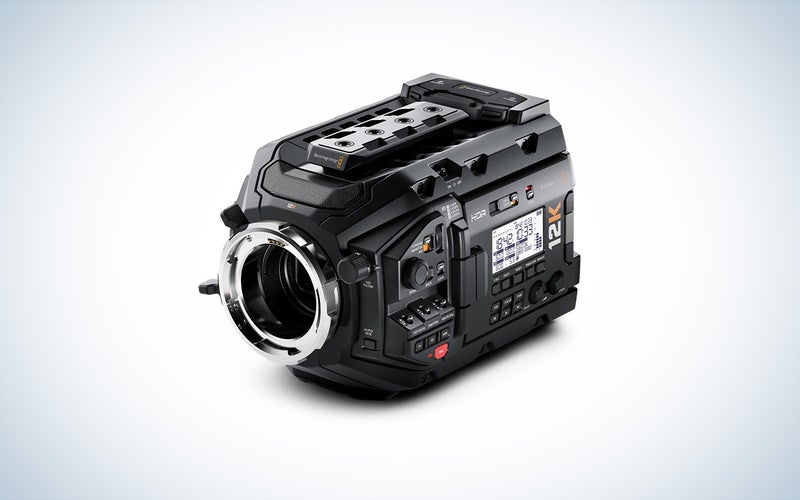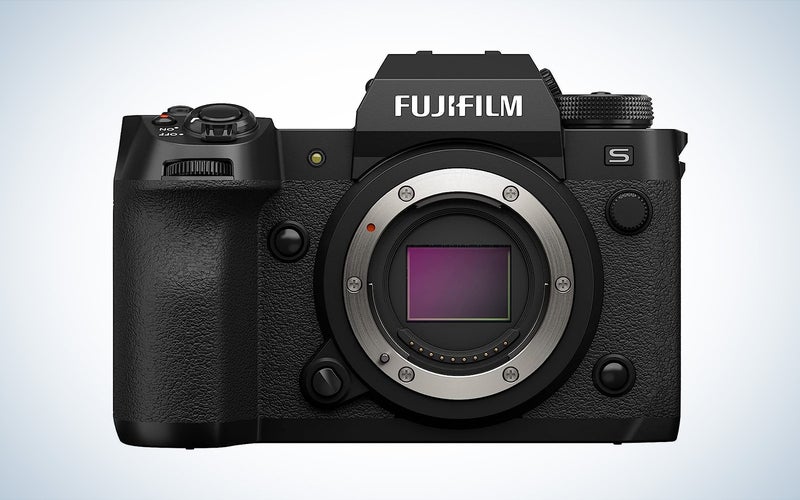We may earn revenue from the products available on this page and participate in affiliate programs. Learn more ›
8K Cameras create footage that is four times larger than what you can achieve with a camera that tops out at 4K. That translates to moving images that are brighter, sharper, offer way more details, and are viewable on massive screens. It also means that you will need high-quality, fast memory cards, large external storage drives, and computers with massive amounts of RAM to actually process all the info that a camera is creating when it shoots 8K.
8K video is something that is still primarily used by professional filmmakers and commercial shooters. But it’s starting to become more popular with online content creators, amateurs, and enthusiasts who just don’t feel like 4K is enough. Keep reading for some of our favorite 8K cameras currently on the market.
- Best overall: Nikon Z9
- Best Sony: Sony A1
- Best Canon: Canon EOS R5 C
- Best cinema camera: Blackmagic Design URSA MINI Pro 12K
- Best budget: Fujifilm X-H2
How we chose the best 8K cameras
The cameras that appear in this guide were selected through a mixture of hands-on experience, editorial reviews, and user feedback. When selecting the products below, it was important to choose cameras that could handle recording large amounts of 8K footage. Since many want a single device to do it all, we also aimed to choose hybrid cameras that can take excellent still photos as well. Usability and durability were also important when making our selections. 8K cameras are inherently expensive, but we have included a more budget-friendly option as well.
The best 8K cameras: Reviews & recommendations
Although 8K tech is certainly exciting, for most visual creatives, the high resolution is a bit overkill—especially when considering the high-end computers needed to actually process those massive 8K files. That being said, for a certain group of creators, having a camera that can reliably shoot 8K footage is a game changer.
Best overall: Nikon Z9
Nikon
Specs
- Resolution: 45.7 megapixels
- Video resolution: 8.3K 60p
- Sensor size: Full-frame
- Lens mount: Nikon Z
- Image stabilization: Sensor-shift, 5-axis
- Memory card slots: Dual slot: CFexpress Type B / XQD
- Weight: 2.9 pounds
- Dimensions: 5.9 x 5.9 x 3.6 inches
Pros
- 2-hour record limit for 8K
- Easy-to-use AF system
- Twin CF Express B card slots
- Durable build
Cons
- Heavy
- No fully-articulating screen
The Nikon Z9 snags our pick for best overall 8K camera thanks to its long 2-hour recording limit, fast read-out speed sensor, and impeccable and easy-to-use AF system. And while its price may seem high, given its specs, it’s actually quite a value compared to other 8K cameras currently on the market. It’s not just great for 8K video, either. The Z9 is built around a 46-megapixel full-frame sensor, producing highly detailed stills. And it can shoot jpegs up to 30 fps and raw photos up to 20 fps.
The Z9 uses Nikon’s 3D Tracking AF system and can automatically detect whether the subject in the frame is a person, animal, or vehicle. Design-wise, the camera does a good job of keeping video and photo modes separate, making it a nice choice for the hybrid shooter who wants to use one body to accomplish both. Internal raw video can be captured in 12-bit N-RAW at 8.3K 60p or 10-bit H.265 at UHD 8K 30p. And both the image stabilization and autofocus with video are impressive and reliable. Ultimately the Nikon Z9 is one of the best mirrorless full-frame cameras on the market that can shoot 8K video.
Best Sony: Sony A1
Sony
Specs
- Resolution: 50.1 megapixels
- Video resolution: 8K 30p
- Sensor size: Full-frame
- Lens mount: Sony E
- Image stabilization: Sensor-shift, 5-axis
- Memory card slots: Dual slot: CFexpress Type A / SD (UHS-II)
- Weight: 1.6 pounds
- Dimensions: 5.07 x 3.81 x 2.74 inches
Pros
- CFexpress Type A card slot and an SD card slot
- Excellent AF tracking
- Less prone to overheating
- High resolution is ideal for quality stills
Cons
- Expensive
- No fully-articulating screen
Sony’s flagship camera may be expensive, but it doesn’t skimp on video specs. Built around a 50-megapixel full-frame sensor, the Sony A1 can shoot 10-bit 8K video at 30p with Log. Although many of the video features found inside the A1 are similar to those of the a7S III, the larger sensor found inside the A1 is what makes it capable of shooting full-width 8K footage.
The camera features in-body image stabilization, which makes it great for shooting handheld. And its fast readout rates mean that dealing with pesky rolling shutter effect is typically not an issue. Compared to other mirrorless cameras offering 8K video, the A1 seems less prone to overheating while filming. If budget isn’t an issue, the Sony A1 is a great workhorse camera capable of shooting high-quality stills and superb 8K video.
Best Canon: Canon EOS R5 C
Canon
Specs
- Resolution: 45 megapixels
- Video resolution: 8K 30p
- Sensor size: Full-frame
- Lens mount: Canon RF
- Image stabilization: Digital
- Memory card slots: Slot 1: CFexpress Type B, Slot 2: SD/SDHC/SDXC (UHS-II)
- Weight: 1.7 pounds
- Dimensions: 5.6 x 4 x 4.4 inches
Pros
- Netflix approved camera
- CFexpress card slot and a UHS-II SD card slot
- Fully articulating screen
Cons
- Only offers digital stabilization
- Battery limitations
The Canon EOS R5 C is a video-oriented version of the Canon EOS R5—a hybrid-style camera that improves upon some of the video tech found inside the R5. Although these upgrades include a built-in fan to prevent overheating while shooting, they don’t stop there. The R5 C is one of the few mirrorless cameras to be listed as a Netflix-approved camera. It can shoot 12-bit Cinema Raw Light at 8K at 60p and includes a waveform monitor and a timecode socket.
The R5 C uses the same LP-E6NH batteries found in the EOS R5, but when recording larger amounts of video, they do come with some limitations. At the fastest data rates, the internal batteries won’t have enough juice to power AF lenses. You can pair the EOS R5 C with an external power source to overcome these limitations, though it will make the setup a bit more bulky.
Best cinema camera: Blackmagic Design URSA MINI Pro 12K
Blackmagic Design
Specs
- Resolution: 79.6 megapixels
- Video resolution: 12K 60p, DCI 8K 120p
- Sensor size: Super 35
- Lens mount: ARRI PL
- Image stabilization: None
- Memory card slots: Dual slot: CFast (CFast 2.0), Dual slot: SD/SDHC/SDXC (UHS-II)
- Weight: 5.62 pounds
- Dimensions: 9.2 x 5.92 x 5.87 inches
Pros
- Netflix approved camera
- Incredibly versatile
- Can shoot up to 12K footage
Cons
- Requires build-out
- Not good for photography
This cinema camera is built around a 12K Super35 HDR CMOS sensor and can shoot 8K video at 120fps (or up to 12K 60fps). It boasts 14 stops of dynamic range, uses Blackmagic’s superior color science, and can record to CFAST cards or high-speed external USB C drives. As a cinema camera, it’s not meant to be used to shoot stills, although it does still have the option to frame grab. But its massive resolution makes it a great tool for filmmaking.
It features built-in ND filters, an ARRI PL lens mount, and tons of inputs for connecting all varieties of microphones and monitors to the camera body. Compared to other 12K capable cinema cameras on the market, the Blackmagic Design URSA Mini Pro is an excellent value. Plus, it’s listed as one of the approved camera models for filming Netflix productions.
Best budget: Fujifilm X-H2
Fujifilm
Specs
- Resolution: 40.2 megapixels
- Video resolution: 8K 30p
- Sensor size: APS-C
- Lens mount: ARRI PL
- Image stabilization: Sensor-Shift, 5-Axis
- Memory card slots: Slot 1: CFexpress Type B, Dual slot: SD/SDHC/SDXC (UHS-II)
- Weight: 1.5 pounds
- Dimensions: 5.4 x 3.7 x 3.3 inches
Pros
- Good image stabilization when shooting handheld
- Affordable for a camera that shoots 8K
- Face and eye detection works in video mode
Cons
- Noticeable rolling shutter in made video modes
- No AF tracking when shooting video
While it may seem absurd to call a camera that costs nearly 2K a budget choice, cameras with 8K capabilities tend to be expensive. Although the Fujifilm X-H2 may be one of Fujifilm’s most expensive APS-C cameras, for a camera that offers 8K video, it’s a steal. Its high-resolution 40-megapixel sensor, image stabilization, and face and eye detection make it a great choice if you are looking to shoot 8K footage without spending close to $5K.
It can record 8K at 30p, and the built-in stabilization makes it a decent camera for shooting handheld footage without excessive wobbling. There’s no built-in fan on the X-H2, though. So if you are trying to film for a long time, don’t be surprised if the camera begins to overheat. You really can’t beat the price, though.
What to consider when buying the best 8K camera
Budget
The most important thing to consider when investing in an 8K camera is being realistic with your budget. 8K video is a high-end feature, and although it’s exciting to be able to shoot in such high resolutions, it’s going to cost you. Before you splurge on a camera that can record 8K video, consider exactly why you want that much out of a camera.
If you are an independent filmmaker who is interested in eventually seeing their work on streaming platforms like Netflix, spending the extra money on a high-end cinema camera is probably worth the cost. If your work will primarily be seen online—where the differences between 8K and 4K footage are quite frankly negligible, it may be wise to pick a camera in the mid-range.
AF & image stabilization
The importance of having AF and in-camera image stabilization capabilities depend a lot on the way that you shoot. Many videographers prefer to manually focus lenses, so a camera with excellent AF may not be necessary. However, if you are more of a hybrid shooter, the ability to have the camera automatically select focus can be a big relief when shooting. In-camera IS is particularly important if you are planning to shoot handheld but matters much less if the camera recording 8K will be mounted to a tripod, monopod, gimbal, or shoulder mount.
Computer RAM & memory cards
Choosing an 8K camera requires some planning beyond the image-making device. That beautiful 8K footage requires a ton of processing power from the machine that you will be editing on. If you are going to be shooting 8K footage, make sure you have fast cards, big drives, and a computer with enough RAM that it can keep up with the massive data contained within those video files.
FAQs
Q: Does 8K look better than 4K?
8K is four times larger than 4K footage, which translates to a brighter, sharper, and more detailed picture. It also means that the footage can be viewed much closer on larger screens. But looking better ultimately depends on where the 8K footage is going to be shown. If the footage that you are shooting is likely going to be watched on a smartphone screen or a laptop, the quality difference won’t actually matter much. However, if the footage is going to be shown on a massive screen, shooting in 8K rather than 4K will make a difference.
Q: How much RAM is required to run 8K video?
One of the major drawbacks of 8K video footage is that it takes a ton of RAM to actually watch it back and edit it. If you are working with a machine with a high-quality GPU and CPU, it’s possible to get away with only 64 GB of RAM. If you plan on investing in an 8K camera, it’s important to invest in an editing machine that can handle the files as well.
Q: Does any phone have an 8K camera?
There are currently a handful of Android phones that have 8K video capabilities. Phones that can shoot 8K video include the Samsung S20, Xiaomi Mi 10 Pro, and the Red Magic 3S from Nubia. Reportedly the Apple iPhone 15 Ultra will also have 8K capabilities.
Final thoughts on the best 8K cameras
- Best overall: Nikon Z9
- Best Sony: Sony A1
- Best Canon: Canon EOS R5 C
- Best cinema camera: Blackmagic Design URSA MINI Pro 12K
- Best budget: Fujifilm X-H2
Ultimately an 8K camera is a big investment because if you are planning on shooting such high-resolution footage, you won’t just need to upgrade your camera. If you are ready to make the leap into 8K shooting, just make sure your memory cards, storage systems, and computers are up to the task of handling those massive files. But if you’re looking to capture video in the highest resolutions, an 8K camera may be worth considering.
Why trust us
PopPhoto has a long history of delivering the opinions of some of the sharpest and most prolific camera dorks the world has to offer. Since 1937, we’ve been reviewing cameras, providing wisdom from well-known photographers, and generally just nerding out about all that goes into making great pictures. Our current crop of writers and editors have decades of professional photography and camera writing experience among them. Collectively, we’ve probably shot with just about every camera and lens combo you can imagine—as well as some obscure stuff you may not even know about. Remember the Casio Tryx folding camera? PopPhoto does.
We also get that buying a camera is a big decision, which is why we’re dedicated to helping folks choose the right one (or, in our case “ones”) for their needs. Case in point: Handing over top dollar for an expensive rig may leave you unsatisfied if it doesn’t fit your preferred shooting style. Sure, a $6,000 sports-oriented DSLR can capture landscapes, but do you really need to do it at 30 frames-per-second? No, you don’t.
